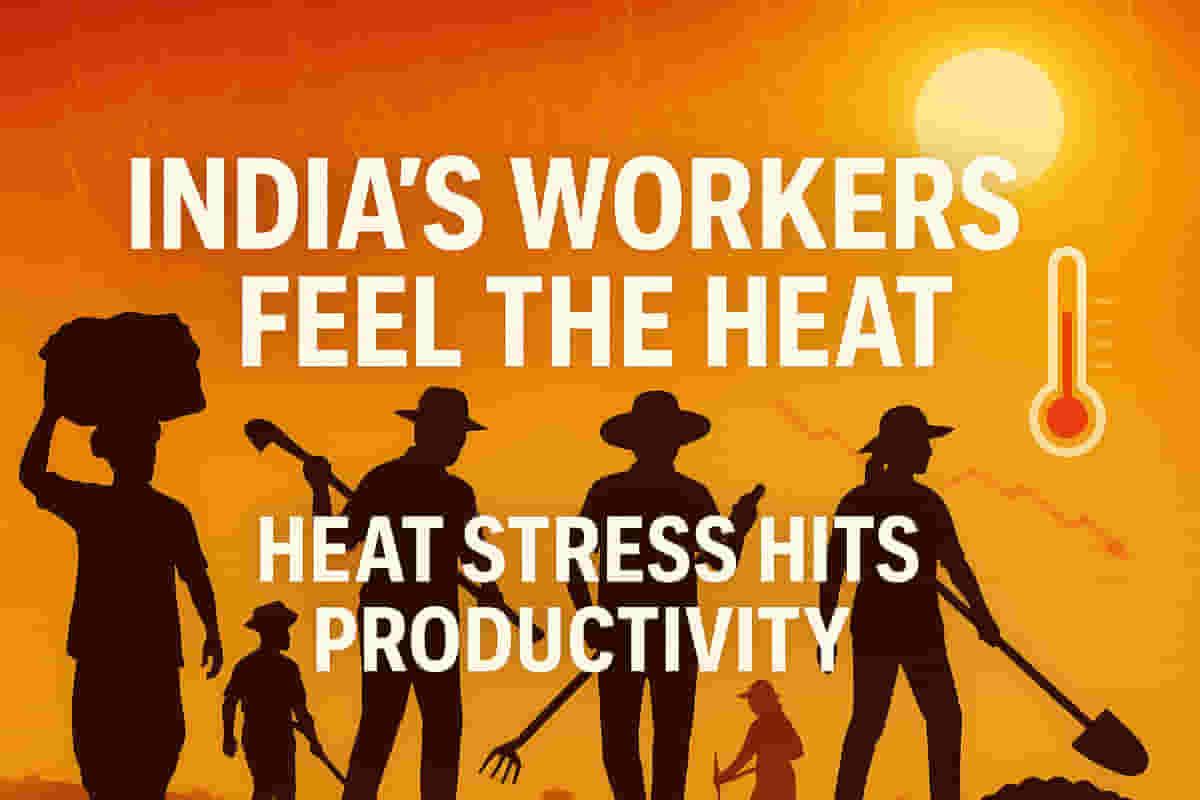Heat Stress Halving Productivity for Migrant Workers in India
Economy
|
31st October 2025, 10:23 AM

▶
Short Description :
Detailed Coverage :
A recent study, published in the journal Earth's Future, suggests that heat stress has led to a nearly 10 percent decline in labor capacity among migrant workers in India over the past four decades (1980-2021). Researchers, including those from the Indian Institute of Technology Gandhinagar, analyzed data focusing on the top 50 urban areas, identifying a significant rise in humidity and consequently, indoor heat stress in rural-to-urban migration hotspots across North, East, and South India. Cities like Mumbai, Delhi, Kolkata, and Hyderabad are identified as major destinations for migrants, with populations potentially reaching up to 10 million. The study projects that for every degree Celsius increase in global warming, migrant workers could face substantially higher heat stress, both indoors and outdoors, diminishing their capacity for physical labor. Current estimates suggest that migrant workers, who form a substantial portion of India's population (potentially 42%), are highly vulnerable due to physically demanding jobs often performed outdoors for long hours. The findings indicate that the season of extreme heat stress is likely to lengthen, impacting overall well-being and labor capacity. If global warming exceeds 2 degrees Celsius, nearly all urban areas in India could experience high indoor heat stress, potentially reducing typical labor capacity to 71% (at 3°C warming) and 62% (at 4°C warming), compared to 86% under current warming trends.
Impact This news has a significant impact on the Indian economy by highlighting a direct threat to labor productivity, which affects GDP, agricultural output, construction, and manufacturing sectors. It underscores the need for climate adaptation strategies and worker welfare policies, impacting businesses and government planning. Rating: 8/10.
Difficult Terms Explained: Heat Stress: A condition where the body is unable to regulate its own temperature, often due to prolonged exposure to high temperatures, leading to health issues and reduced work capacity. Wet Bulb Temperature: A measure of temperature that combines air temperature and humidity. It represents the lowest temperature that can be reached by evaporative cooling, indicating the actual heat stress experienced by the human body; higher wet bulb temperatures mean less efficient cooling through sweating and thus higher heat stress.